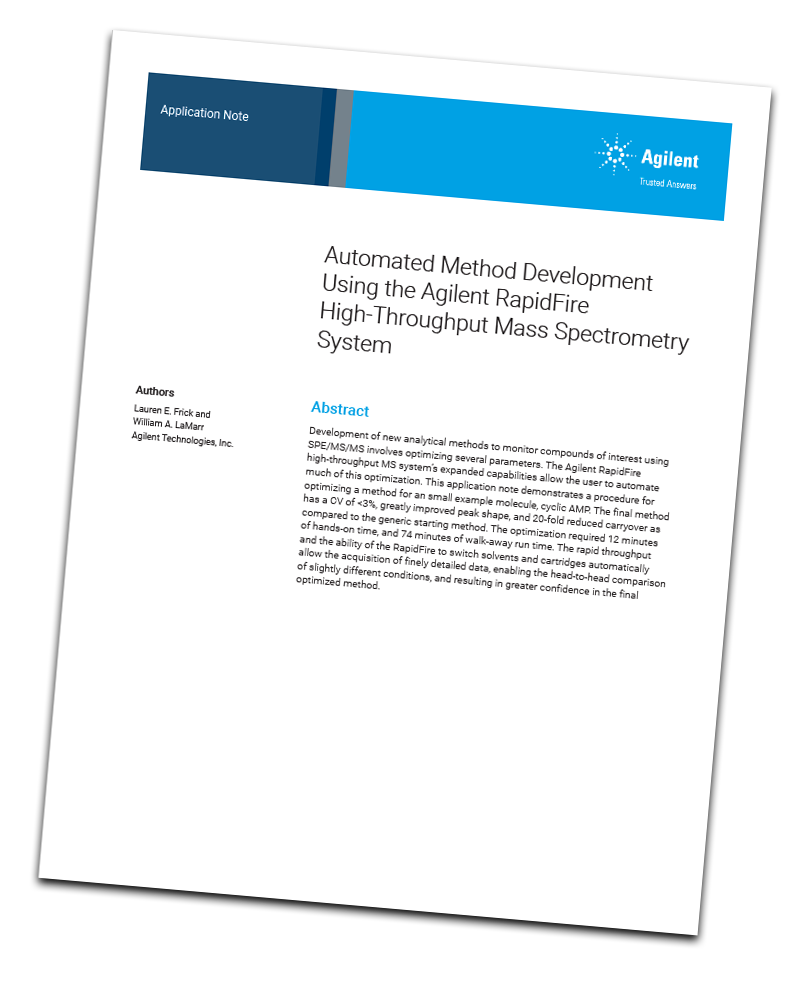This application note demonstrates a procedure for optimizing a method for a small example molecule, cyclic AMP. The final method has a CV of <3%, greatly improved peak shape, and 20-fold reduced carryover as compared to the generic starting method.
 Development of new analytical methods to monitor compounds of interest using SPE/MS/MS involves optimizing several parameters. The Agilent RapidFire high‑throughput MS system’s expanded capabilities allow the user to automate much of this optimization.
Development of new analytical methods to monitor compounds of interest using SPE/MS/MS involves optimizing several parameters. The Agilent RapidFire high‑throughput MS system’s expanded capabilities allow the user to automate much of this optimization.
Introduction
New method development for mass spectrometry-based assays can be time-consuming. Multiple packing materials and buffer systems must often be explored before a suitable combination is found. LC methods require several minutes each, and trying different options can quickly add up to a significant time investment. The Agilent RapidFire high-throughput MS system addresses this bottleneck by allowing sample analysis in 8 to 15 seconds per sample, enabling various buffers and cartridges to be tested much more quickly. The RapidFire takes this improvement one step further by offering the ability to switch solvents and cartridges in an automated fashion. Method development can then be set up to run automatically, allowing the user to attend to other tasks. This application note follows an example protocol to optimize a RapidFire method for a representative small molecule, cyclic adenosine monophosphate (cAMP).
Experimental
Experimental conditions can be found by downloading the full application note.
Results and Discussion
An Agilent RapidFire high-throughput MS system method for a representative small molecule was developed in an automated fashion from a generic starting point through three rounds of optimization to determine the cartridge, buffer composition, buffer additives, and RapidFire timings that gave the best peak shape, baseline separation, and peak height, as well as an absence of carryover. The CV for six sample injections under the final optimized method was 2.9%. Peak shape was greatly improved and carryover was reduced 20-fold from the generic starting point method. This optimization required about 12 hands-on minutes spent setting up the instrument and the required batches. Total hands-off optimization time, including solvent mixing, was 74 minutes.
Conclusion
The speed of a RapidFire high‑throughput MS system eliminates guesswork from new method development, as many conditions can simply be tried very quickly and the real results observed. The rapid throughput and the ability of the RapidFire to switch solvents and cartridges automatically allow the acquisition of finely detailed data, enabling the head-to-head comparison of slightly different conditions, and resulting in greater confidence in the final optimized method. The ability to develop robust, reliable new methods with minimal hands-on time frees up researchers to attend to other tasks while maintaining or even improving the quality of the work accomplished.
